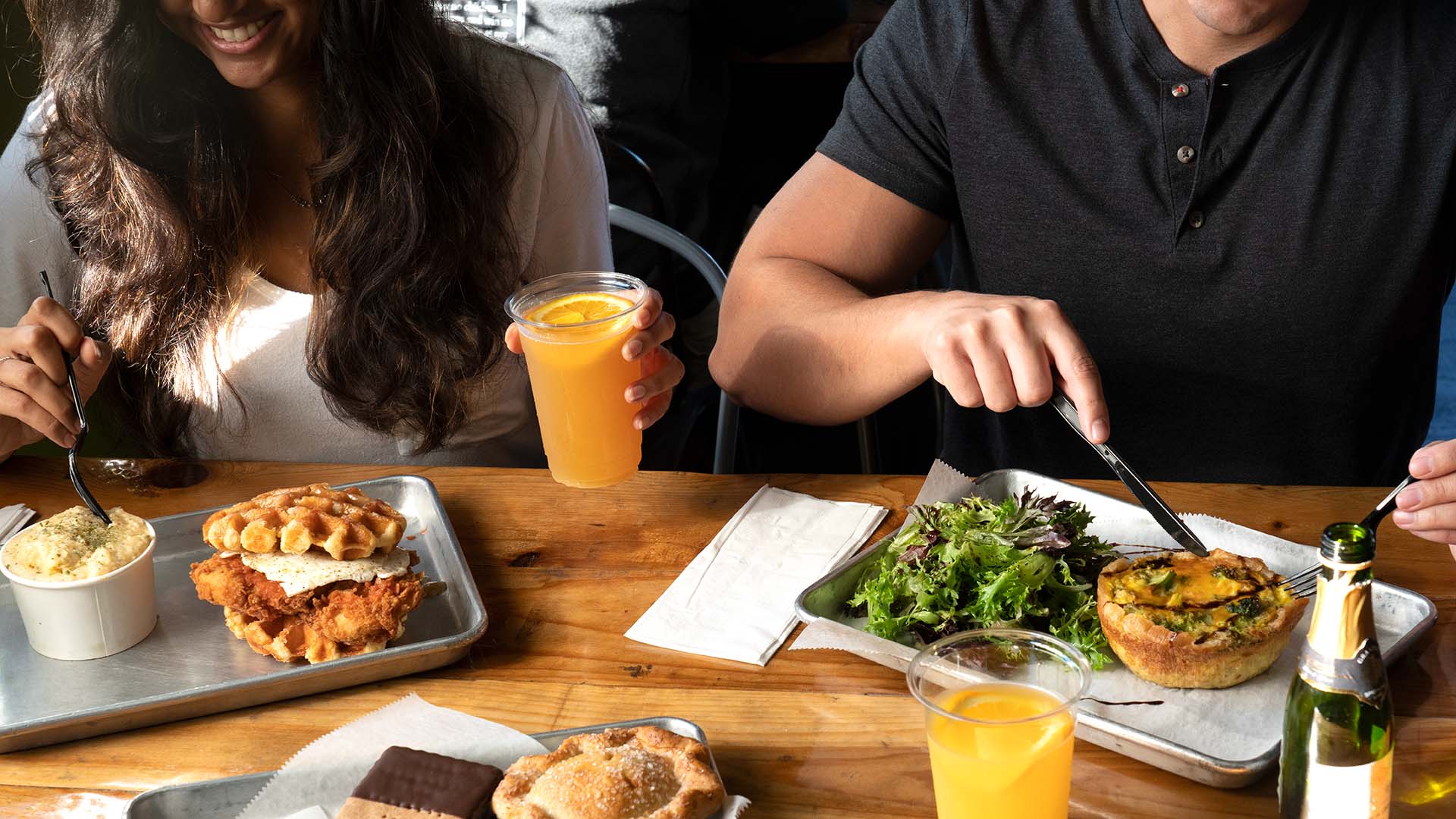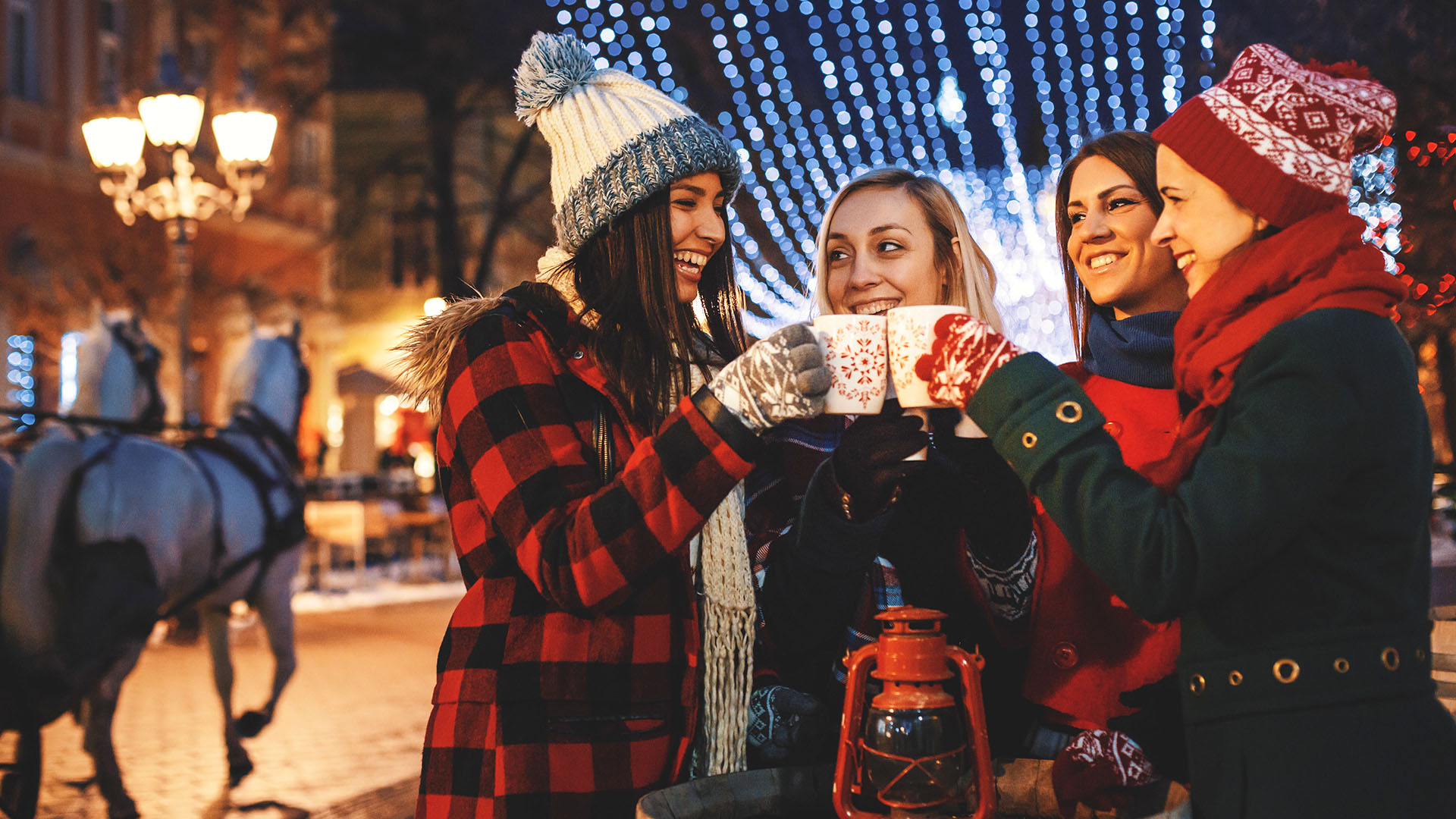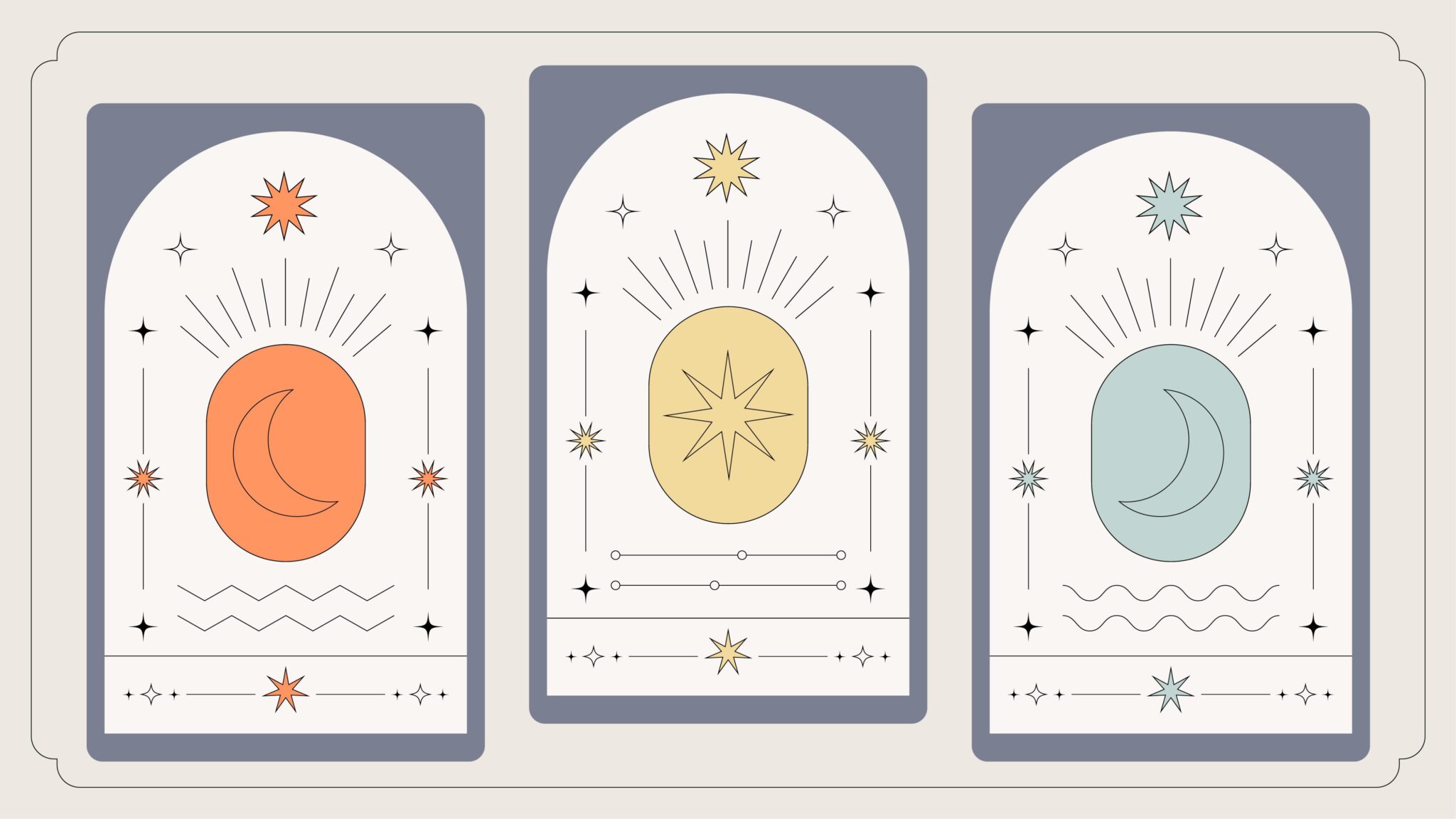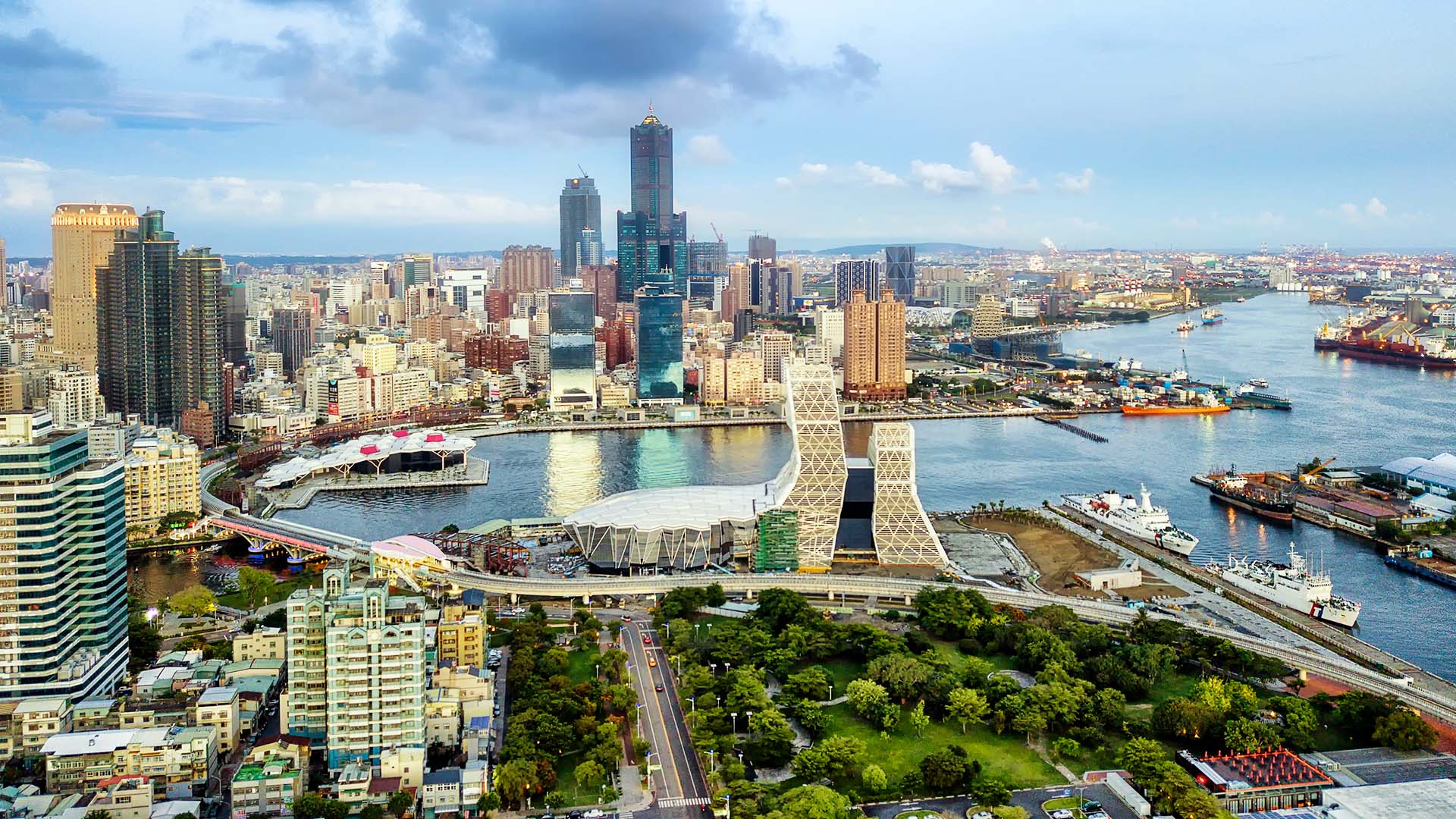
Explore Kaohsiung, an emerging hub for culture and art. (Photo: Getty Images)
Tips + TrendsA Guide to Kaohsiung, Taiwan’s Emerging Culture Hub
By Dana TerFor a long time, the southern city of Kaohsiung has played second fiddle to Taiwan’s capital, Taipei. Indeed, there’s a laid-back buzz — small fishing boats and large cargo ships docked on the harbor are reminders of Kaohsiung’s maritime past and continued importance as a trading port.
But look past the industrial facade and notice a flourishing art scene. It started with the Pier-2 Art Center, an initiative to renovate abandoned warehouses into galleries, and today, Kaohsiung is a city of captivating public-art installations, indie record stores and ceramic shops. Here’s what to eat, see and do in this emerging culture hub.
As always, check for travel restrictions or closures before planning your trip.
Art and Culture
The 3.3-hectare National Kaohsiung Centre for the Arts is the largest arts venue in the world under one roof. The mammoth white building with four performance halls and an amphitheater is far from imposing. Dutch architectural firm Mecanoo designed it to mimic the contours of a wave, the result of which is a silent serenity that emanates throughout the surrounding lawns.
The new public art installation, Kaohsiung Shui Shui, has a similar calming effect. Shui means “water” in Chinese, and water gushes down like a waterfall from the sides of twisting grey concrete walls, which range from 60 to 118 feet (18 to 36 meters) tall. The most brilliant part is the fog that envelops visitors.
Green pockets are aplenty in Kaohsiung. A palm-tree-fringed path leads the way to the Kaohsiung Fine Arts Museum. The four-story exhibition space displays everything from calligraphy to ceramic engravings that cover entire walls.
And in Yancheng District, Pier-2 Art Center is a cluster of abandoned industrial warehouses converted into art galleries, its walls splattered with colorful street art. Generally avant-garde leaning, Pier-2 hosts the annual Art Kaohsiung, one of Asia’s biggest art fairs, which takes place every December.
History
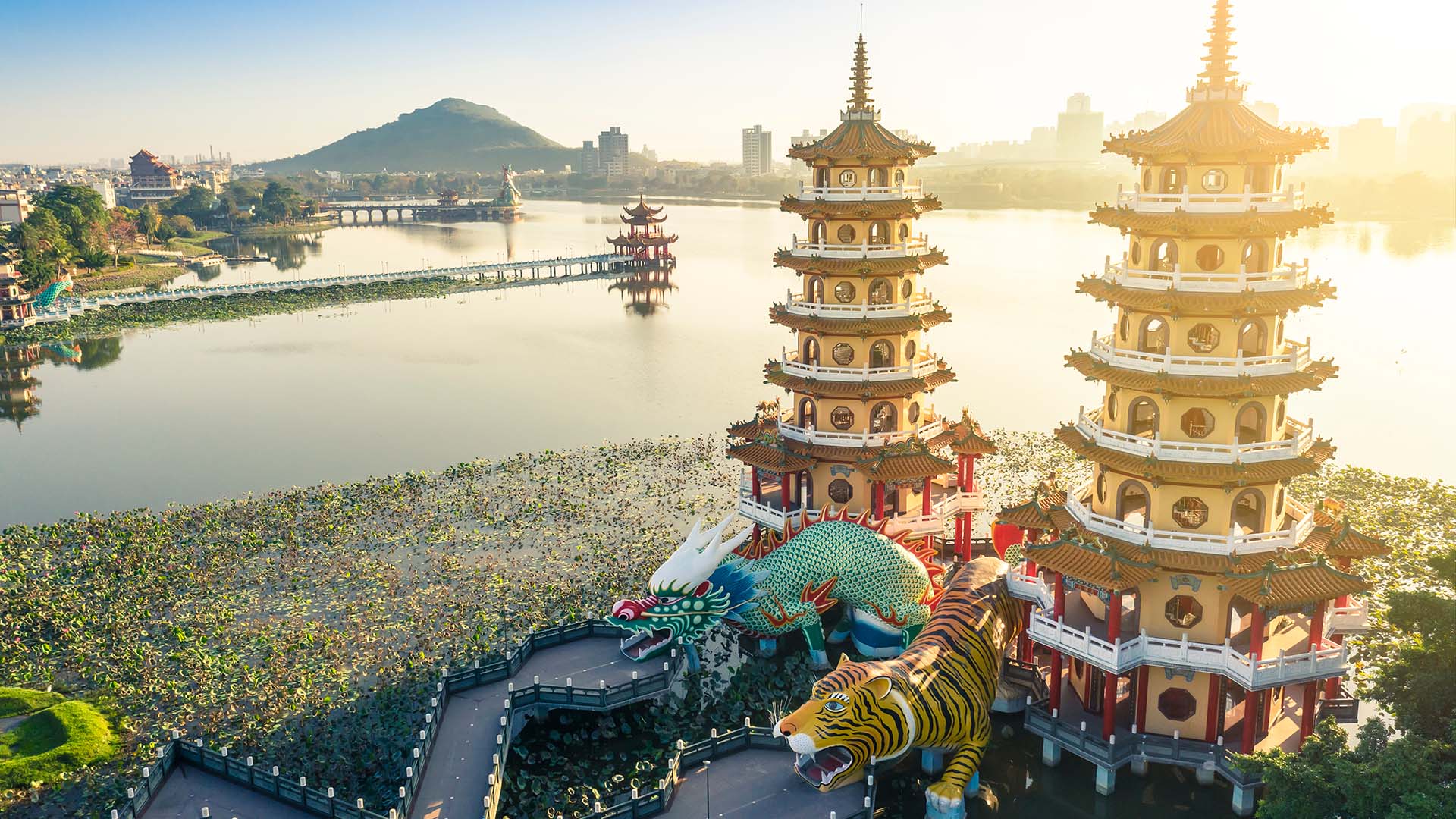
Zuoying District’s iconic Lotus Pond is a floating fairy tale with a colorful history to match its 20 elaborately designed temples, each devoted to a different deity. In the 17th century, the mayor built a pagoda on a natural body of water, and over centuries, authorities expanded the pond to irrigate nearby farms.
Lotus Pond has been in its current form since 1951, with cycle and foot paths encircling the 42-acre lake. Don’t miss the enormous Dragon and Tiger pagodas. It’s said that entering from the dragon’s mouth and exiting from the tiger’s brings good fortune.
The Kaohsiung Museum of History stands out in a different way. The lime-green building, constructed in 1939, served as the city hall during the Japanese colonial era. Today, it’s a treasure-trove of documents on topics such as Taiwanese indigenous peoples.
For those who prefer fiction, the Kaohsiung Film Archive has a sizable collection of old film reels and posters, including photographs of scenes from famed Taiwanese director Hou Hsiao-hsien’s 1983 Kaohsiung-based film, “The Boys of Fengkuei.”
Shopping
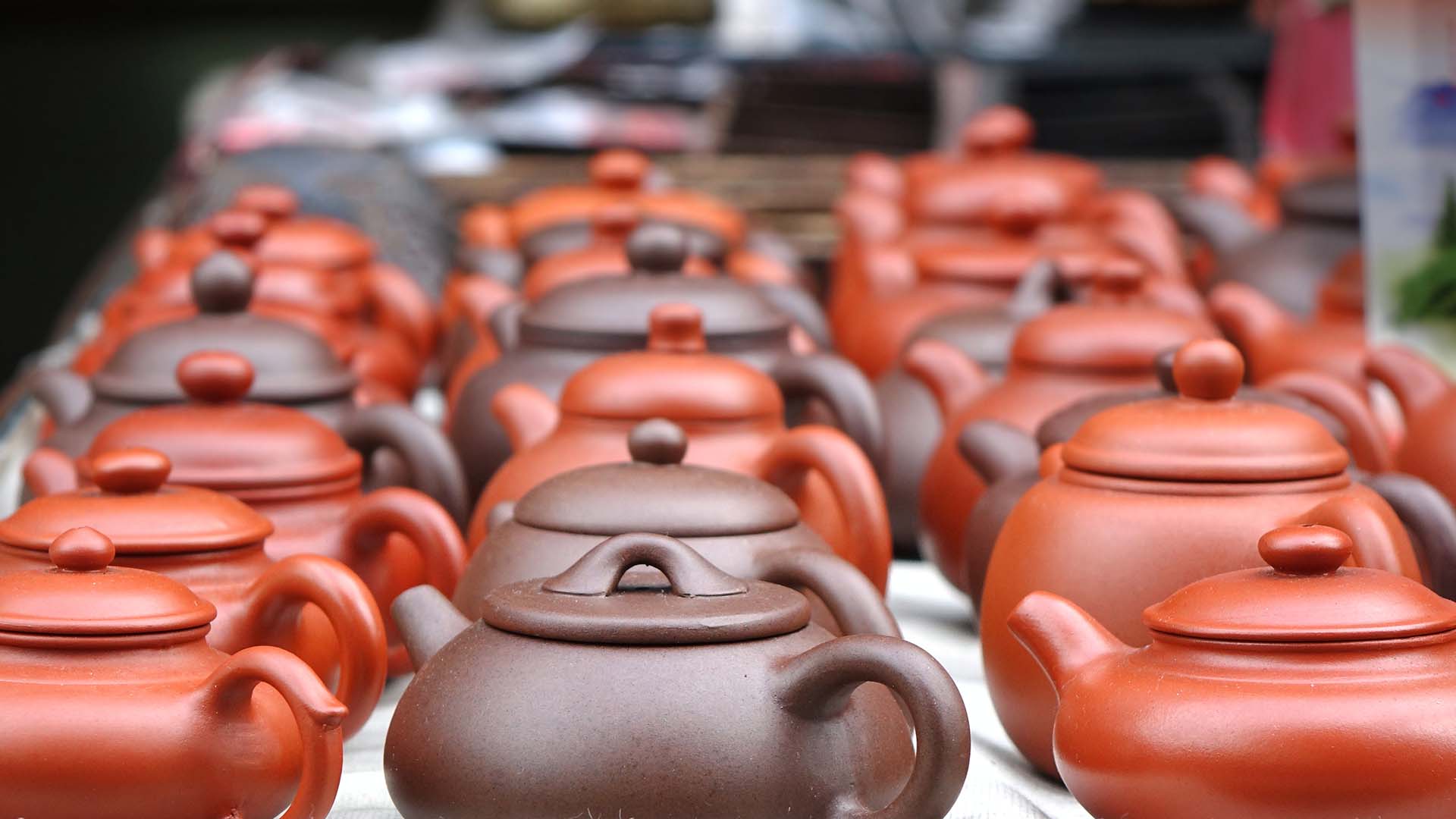
Indie bookstore Takao Books has a wonderful poetry collection, as well as books on Taiwanese society and culture. Most titles are in Chinese, but there are colorful-printed tote bags and whimsical coffee-table books.
Equally adorable is Abbey Road Record Store. Named after the Beatles album, it houses a Kaohsiung native’s extensive record collection. The sidewalk outside the shop mimics the famous crossing, and inside, black-and-white walls and snazzy-print furniture transport customers to the ’60s. The records sold include Taiwanese music, Western rock ‘n’ roll titles and rare records.
The souvenir hunt continues at Loves Craft, a husband-and-wife-run ceramics studio that holds DIY pottery lessons for customers to make their own kitchenware.
Make time to stop by Xinjuejiang Shopping District, a lively cluster of small storefronts selling clothes and accessories and interspersed with food vendors and vegetable sellers.
Food
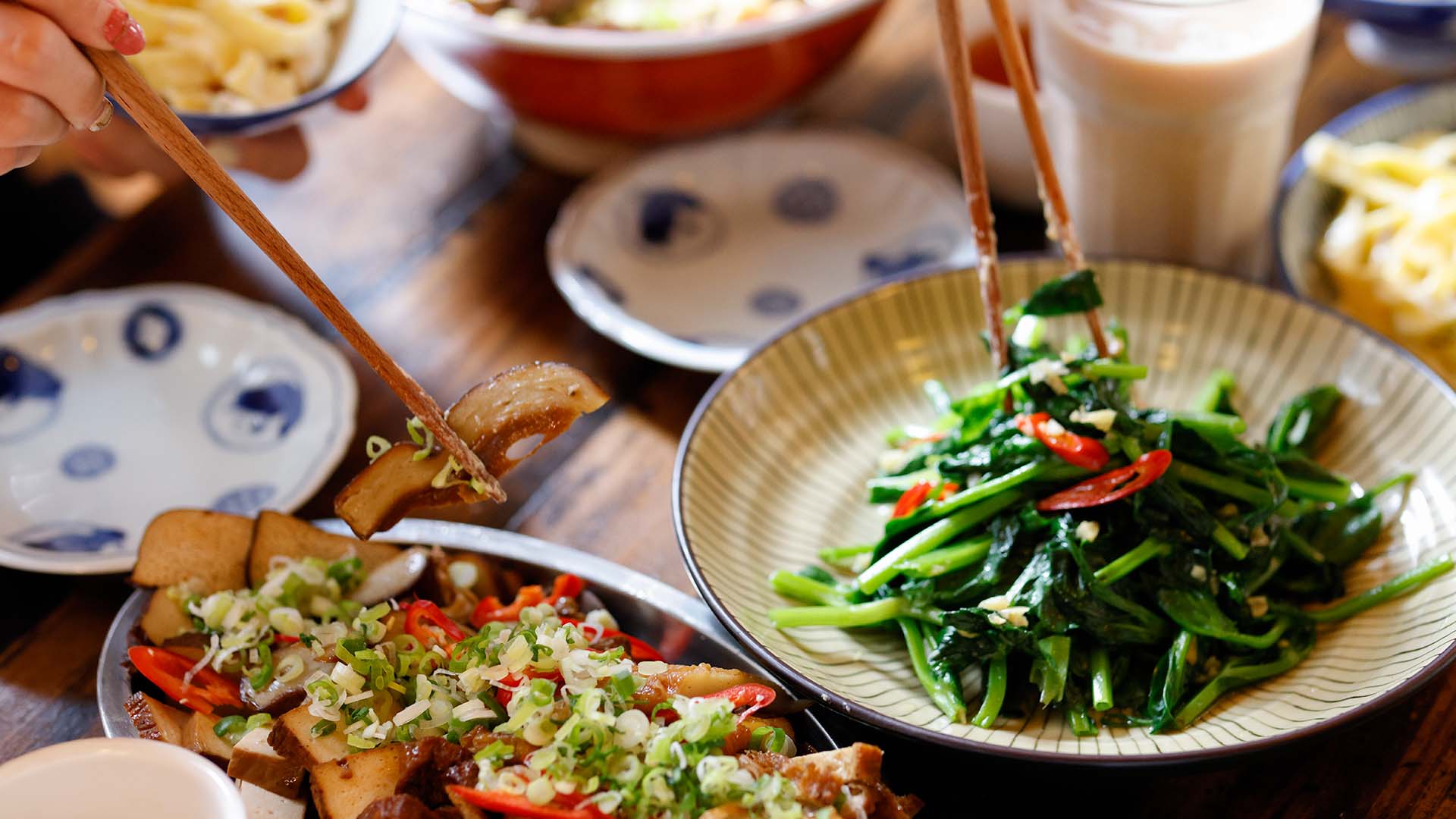
Siao Tuan Yuan is a lovely corner shop that serves homestyle Chinese food, including a classic beef noodle soup and fried rice with side dishes of veggies and minced meat. The narrow, gray-walled restaurant opened in 2018, though the owners have other similar-style restaurants in the city.
It’s a banquet hall setting at Old & New Cuisine, which is known for inventive renditions of traditional dishes. The chef serves whatever is in season or caught that day, whether it’s sea urchin wrapped in lettuce or pumpkin congee.
Most atmospheric is Tzuochuang, a former complex of bars and bowling alleys for the U.S. military that’s been renovated into galleries, bookstores and a vegetarian restaurant that uses local fruits and spices. Several tall trees surround the dining area, one arising from the middle of the glass-encased compound. The outdoor seating is also marvelous, with sprawling wood floors, a pond and seats shrouded in plants.





